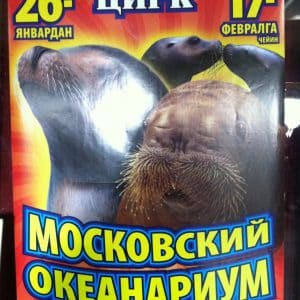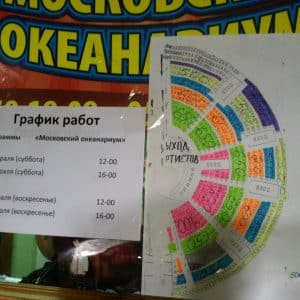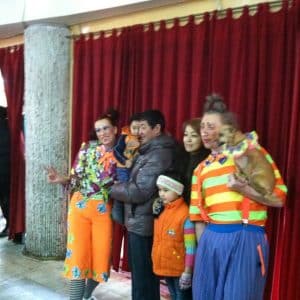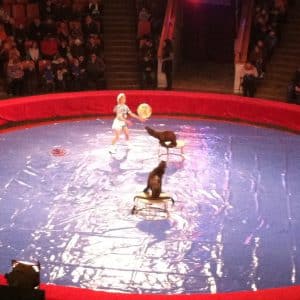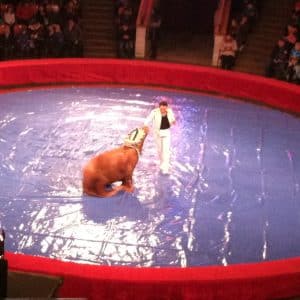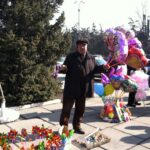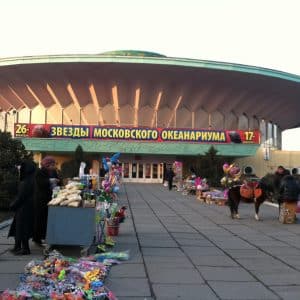“Moscow Oceanarium” / Московский Океариум
January 26-February 17, 2013
Saturday and Sundays, 12:00pm and 4:00pm
Price: 500 som – 700 som
http://circus.312.kg/
On Sunday afternoon, my London School colleagues and I caught the last day showing of the circus that has been in town the past month, the “Moscow Oceanarium.” I have been looking forward to this day since I first arrived in Bishkek, when I saw the splashy (no pun intended) posters plastered all over the city for the production – “Московский Океариум.” A Russian circus! I thought to myself. I could not think of a more exciting cultural experience to welcome my arrival to this post-Soviet wonderland. Fantastical images of skating bears, kalinka music, and beautiful acrobats whizzed through my head. (I suppose now is as good a time as any to disclose that I have never attended a circus before, and that at the time of arrival I did not know that a bear mauled two trainers during a performance in Bishkek in 2009.)
The цирк (circus) did not disappoint. Tickets prices were very reasonable, ranging from 500 som to 700 som (about $11-$15 USD.) There were no bad seats. We were about three rows from ceiling, but they were hardy “nosebleed” seats. More importantly, the audience was great, filled with happy young families, especially young children, all looking for a fun Sunday afternoon. As my colleagues and I entered the dark arena through the velvet curtains, found our seats and started munching on our kettle corn and candy bars, we smiled at this scene around us.We were in good company.
Many of the show’s impressive acts were performed by husband-and-wife teams from Russia, Ukraine, and Kazakhstan. A unicyclist circled around the circus ring, while his wife weaved in and around his body like a nonchalant boa. An American Western routine included gun-toting cowboys galloping on fake horses, and a couple attached to a metal circle contraption that wheeled them dizzingly around the ring — all to the tune of “Cotton Eye’d Joe.” There was a cat-and-dog routine, where a fluffy white feline and three black dogs performed carefully orchestrated moves.
And, of course, there were clowns — a man and woman doing slapstick pantomime routines between the “real” acts. This dynamic duo was impressive. Whether they were ripping each other’s clothes off, revealing polka dot underwear, or squirting water into each other’s hats, they were always able to make the kids laugh. Even my colleagues and I, who considered ourselves “not about the clowns,” could not help chuckling, even after the 10th time the male clown tried to pour water over his silly sidekick. Maybe it is because I have met so many English teachers lately, and have heard so many stories of the difficulties of holding children’s attention for long periods of time. But I had to shake my head at the clown’s effortless ability to hold this crowded arena’s young audience in the palm of their painted hands. As the appropriately cheesy Master of Ceremonies continued to say throughout the show, in his thick, rolled r’s — “Bravo.”
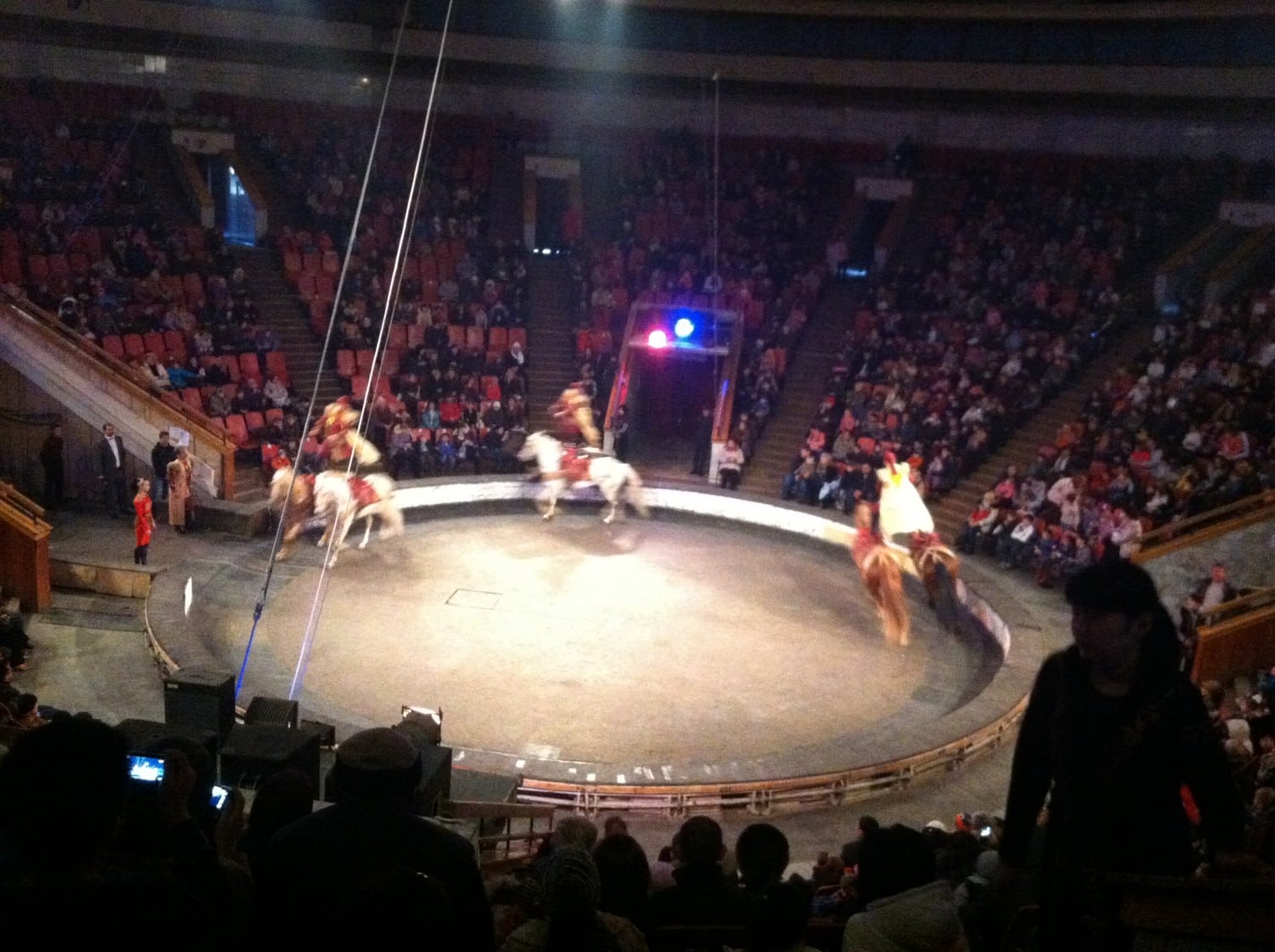
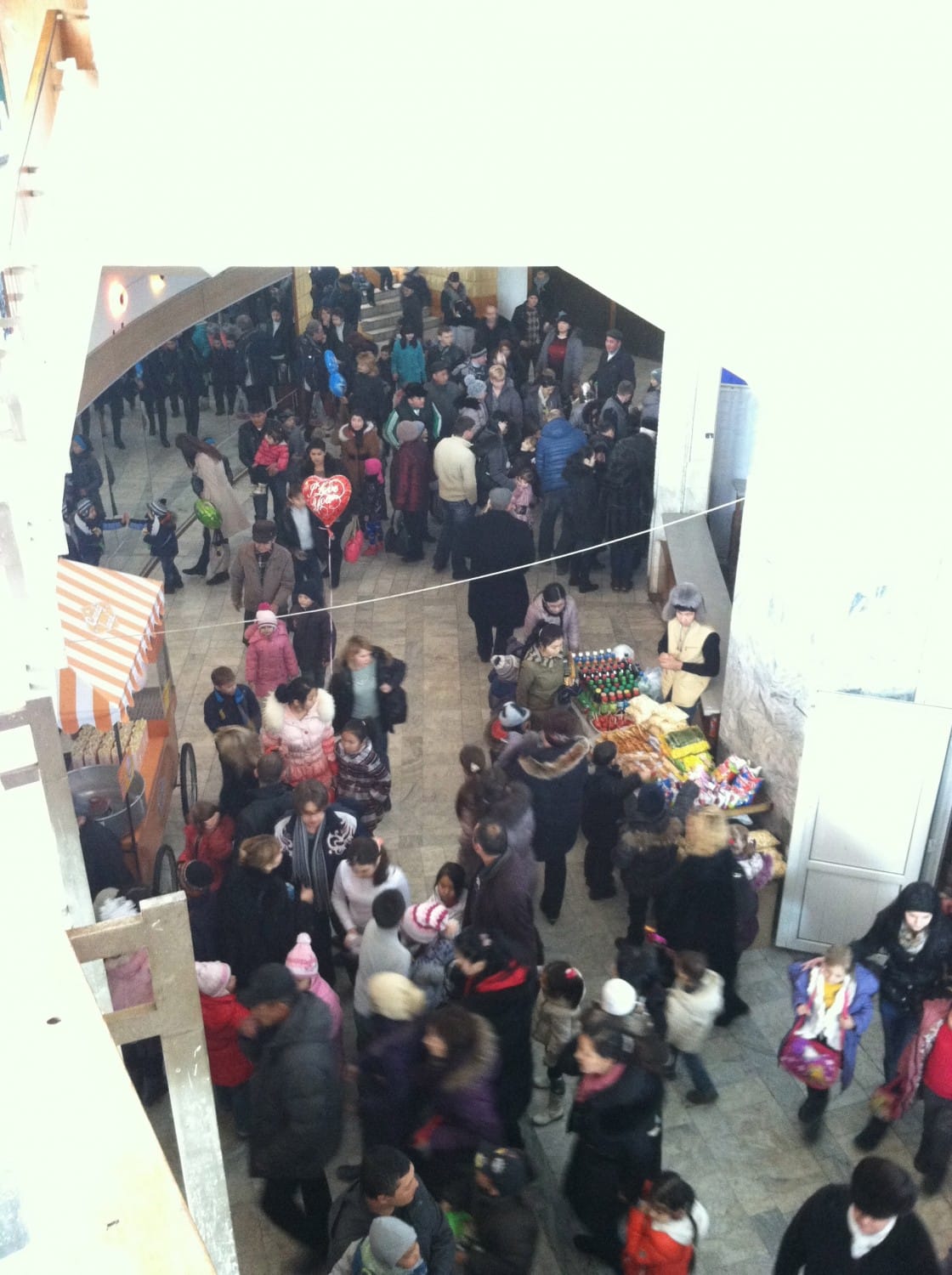
Then just like that, the bells clanged, signaling the end of intermission, and the atrium emptied as fast as it filled.
The second act featured the main stars of the “Moscow Oceanarium:” two seals and a 600-kilogram walrus. The two seals were cute, balancing balls on their tales, climbing up and down a podium, and weaving in and out of the legs of a blond Russian girl in a sailor outfit. The walrus, however, stole the show. By sheer size alone, the walrus could have just sat in the middle of the ring. But it lived up to its weight. Also, if the walrus was tired after almost a month’s worth of shows in Bishkek, it did not show it. It tangoed, clapped with its fins, feigned sleep, did pushups, crunches (shoot, I can’t even do that many crunches, at my weight), and even danced to a traditional Russian dance. If there ever was a way to make up for the show’s lack of a skating bear, as described in my initial fantasy, watching a 600-kilogram walrus wear a babushka’s scarf while dancing to kalinka music,was it.
When the circus ended, my colleagues and I enthusiastically joined the audience in steady, synchronized clapping, as all the performers lined the ring for their final appearance, on their final day, in Bishkek. It was a heck of a show for $10. As I collected my belongings and made my way to the velvet curtained exit, several performers waved the flags of Russian, Ukraine, Kazakhstan, and Kyrgyzstan.



